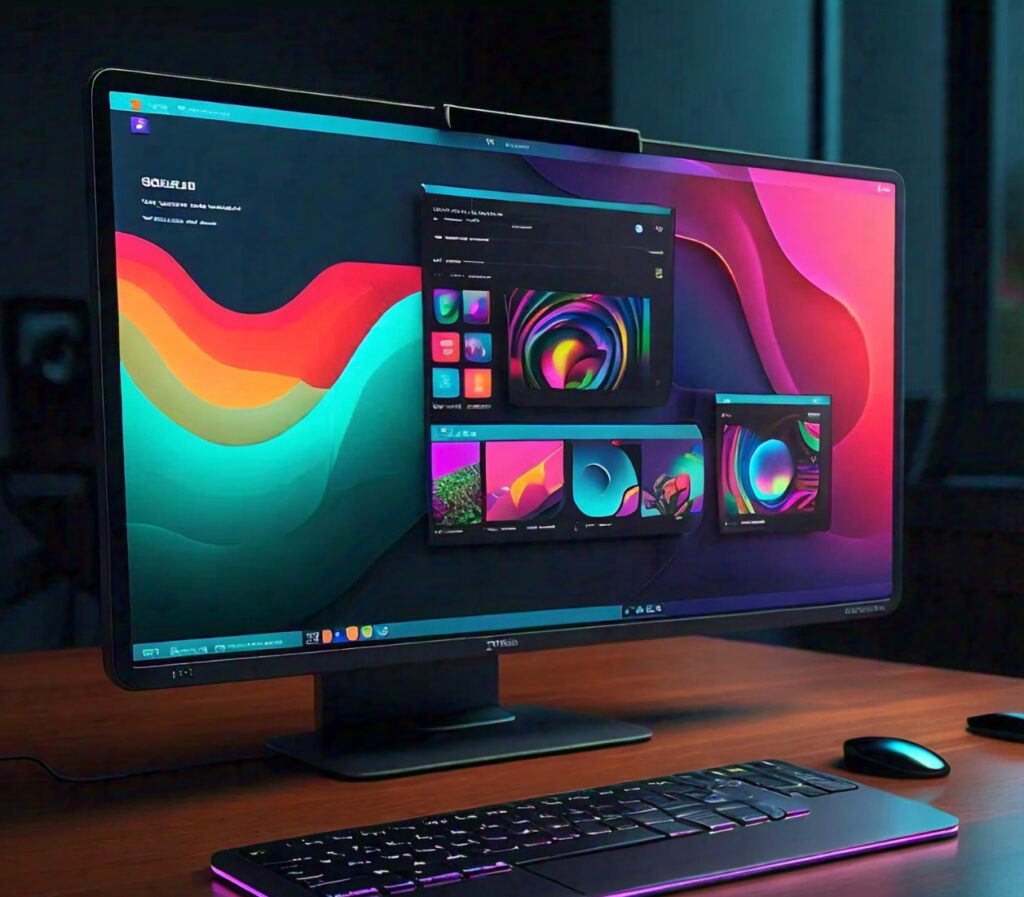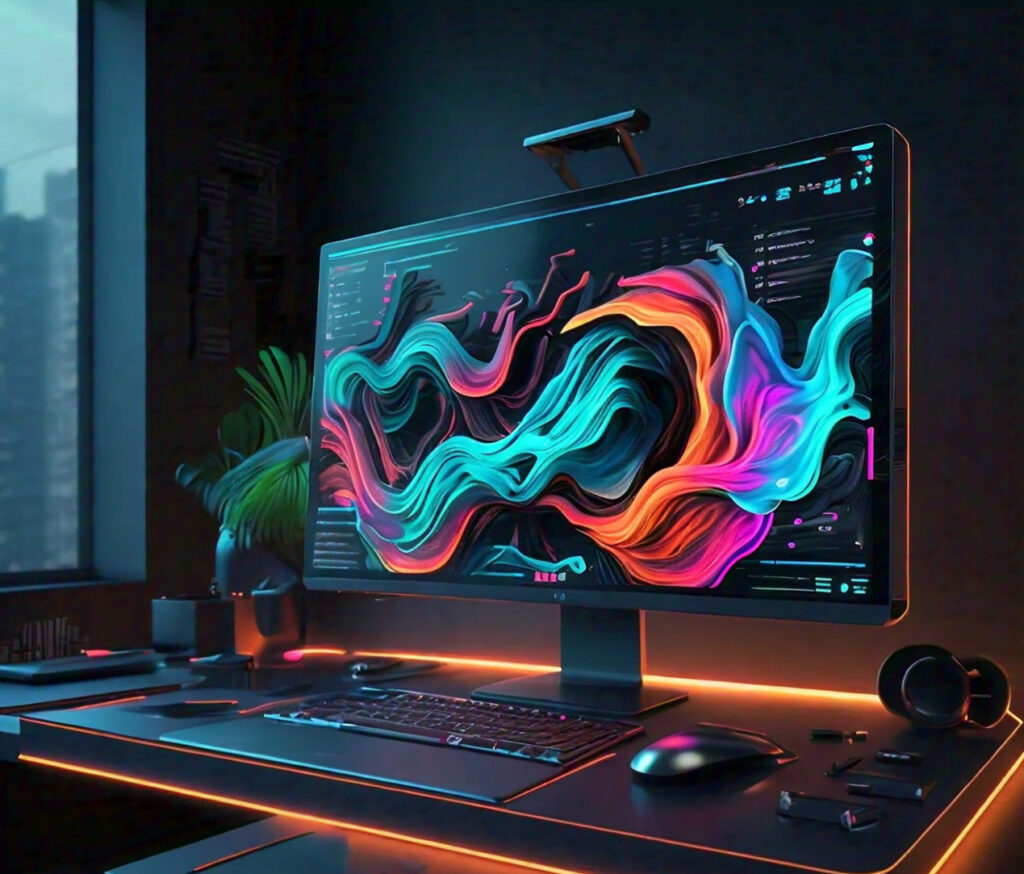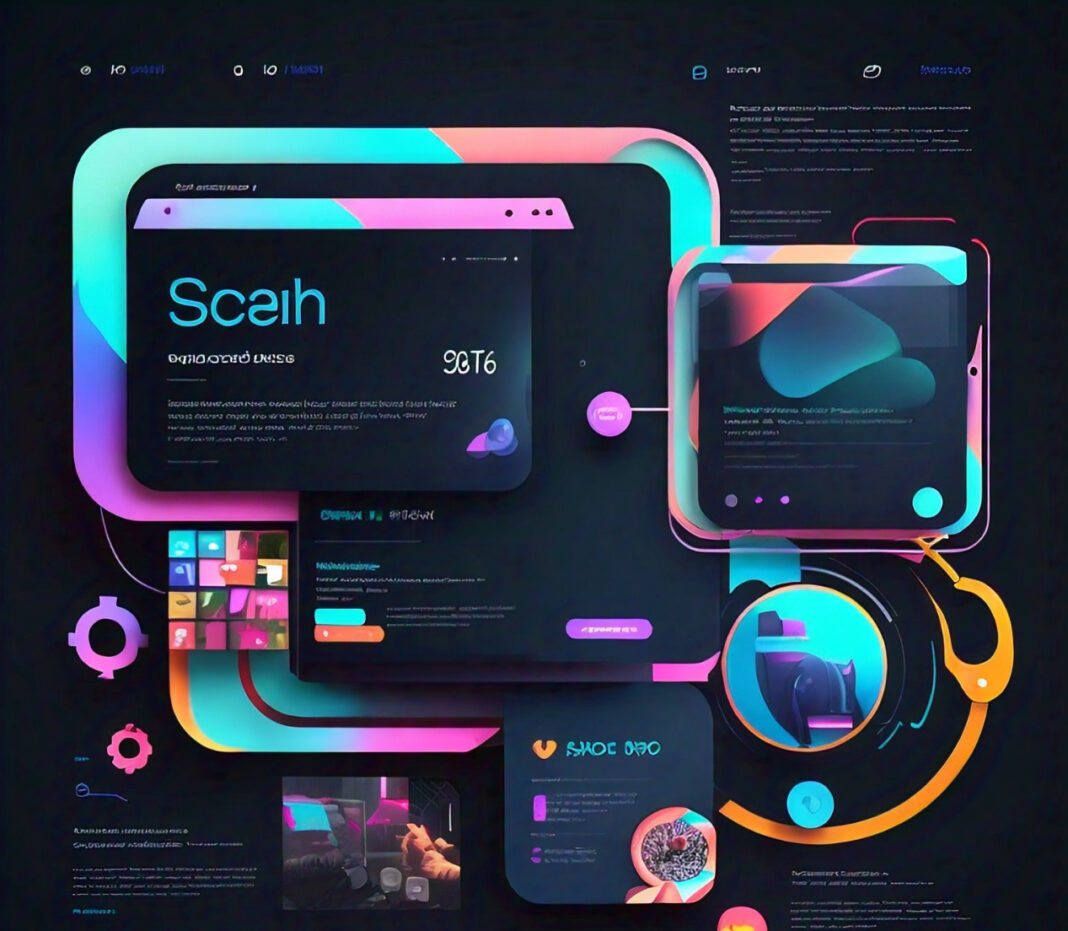User Interface design is one of those fields that never stops evolving, influenced mainly by cutting-edge technological developments, changing user expectations, and the creative vision of each designer on the face of the Earth. With such an eye toward the future, it can be nothing short of exciting to speculate what the upcoming big trends for UI design will encompass.
These trends do not just shape our digital experience in terms of aesthetics; they change how we are going to interact with the technology that surrounds us in our real lives.
we get a sneak peek into some of the rising UI design trends that will take a bigger center stage shortly. From AI advancements to the optimal integration of more immersive technologies, we will deep dive into new ways of innovation that will reshape our digital interfaces.

These insights might give a perspective to anyone—be it a designer, developer, or simply someone curious about what the future of technology holds for us—on the direction digital design is taking.
Let us now move on to learn about the next wave of UI design trends that will shape our digital landscape.
1. AI-Driven Personalization
Artificial Intelligence or AI is all set to dramatically influence UI design in the years to come. While AI technologies are advancing day by day, quite soon we shall see interfaces adapting themselves and personalizing, based on particular user behavior and preferences.
How it works
Artificial Intelligence-driven personalization works essentially by employing machine learning algorithms to digest user information such as browsing history, interaction patterns, and even emotional responses. That information is then put into use in developing an interface that is tailored to the needs and preferences of a particular user.
Benefits
- Enhanced User Experience: Providing users with an interface that is personalized for them will allow users to find whatever they need more intuitively and with much ease.
- Improved Engagement: The likelihood of users appreciating personalized content and features is greater, hence improving overall engagement and retention.
- Accessibility: AI can tune interfaces for users with different abilities or preferences; one can make digital products inclusive.
Possible Use Cases
- E-commerce system with real-time customization
- Applications used to read news can customize the content according to reading habits and interest
- Productivity applications can customize their interfaces according to power users’ workflow
As AI advances, we may expect personalization within UI design to become more seamless and intuitive, hence creating user-oriented uniqueness in the experience.
2. Voice User Interfaces (VUI)
Mainstream development, such as voice user interfaces with an influx of smart speakers and virtual assistants, are part of an enhancement through technology in voice recognition systems; this results in practically every application and device getting integrated with more voice controls.
Key features
- Natural Language Processing: Advanced algorithms that perceive and reply to conversational language.
- Voice Biometrics: The biometric system that uses voice to match the speaker and authenticate the speaker.
- Multi-modal Interfaces: Interfaces integrating voice commands, the graphical output, or the use of touch.
Benefits
- Hands-free Interaction: Perfect for multitasking or when using a touch interface is not practical.
- Accessibility: Technology accessibility for people with a variety of visual and motor capabilities.
- Speed and Efficiency: This can be quicker than typing, such as creating reminders or looking up information.

Overcoming Challenges
- Privacy Concerns: Making sure the data of the users and their conversations are tucked safely and remain private.
- Accuracy: Getting voice recognition at a point where it works reliably with different accents and languages.
- Social Acceptance: Designing interfaces that are comfortable for use in public.
But as more advanced and natural voice-enabled UI/UX comes forth, the future of voice technology will be to play a more significant role daily in our lives in the digital dimension.
3. Augmented Reality (AR) Interfaces
Augmented Reality will shift how we think about UI design because it embeds digital elements into the real world. As AR technology becomes more mainstream via smartphones and smart glasses, interfaces incorporating the technology also will start to become more pervasive.
Key components
- Spatial Computing: Interfaces that can recognize and interact with the physical world.
- Gesture Controls: Using your hands to move digital elements in real space.
- Contextual Information: Overlaying relevant digital information onto real-world objects or locations.
Possible Use Cases
- Retail: Allowing for virtual experiences in trying on clothes and makeup.
- Education: Engaging one’s learning by bringing, in 3D, to life what one is learning about.
- Navigation: Directions and information in real-time overlaid onto the user’s view of the world.
Design considerations
- Seamless Integration: The digital elements will have to seamlessly integrate with the real environment.
- User Comfort: Design UIs that do not present stress or disorientation to the eyes when used for long periods.
- Intuitive Interactions: Create gesture controls that are perceived as intuitive and easy to learn.
In the future of AR, it will be possible to create more immersive and therefore interactivity between the digital and physical world.
4. micro-interactions and Animation
Microinteractions are subtle animations or feedback mechanisms that guide and provide hints to users in the interaction with an interface. The more sophisticated users become, the more appreciation there is for these small yet mighty design elements.
Types of micro-interactions
- Feedback Animations: Visual cues to confirm
- State Changes: Smooth transitions between different states of any interface element.
- Data Visualization: Dynamic representations of data are updated in real-time.
Advantages
- User Experience Enhanced: It provides life to your interface, making it feel more responsive.
- Guiding Interaction: It lets the user know how the particular element should interact.
- Brand Personality Revealed: Subtle animation can be used to denote brand tone and style.
Best-Practices Tips
- Intentional Design: Let every animation be there for a reason and not just as a pretty decoration.
- Performance Optimization: Let not your animations cause your interface to lag, chewing up the resources of devices.
- Consistency: An overall cohesive look for the animation style that is being used within the interface.
With tools available for creating complex designs of many different types of animation, it will mean more sophisticated and intentional micro-interactions will be found in UI general designs.
5. Dark Mode And Color Schemes
Dark mode will most likely be changing even more from here onward. There will be more subtle manners of color schemes that are being developed, taking both aesthetics and user comfort as primary variables.
Evolution of Dark Mode
- Smart Inversion: Smart interfaces or screens that automatically change between the light and dark modes depending on the environment lighting or depending on the time of day.
Features - Custom color palettes that might include many color schemes other than light and dark
- Dynamic color adaptation that works automatically based on what is visible on the screen or based on user preferences
Benefits
- Reduced eye strain: most beneficial during nighttime or in places with low light
- To save energy: helps to maintain the battery life on OLED screens.
- Aesthetic Appeal: Dark interfaces tend to appear more visually appealing and modern to many users.
Design considerations
- Contrast and Readability: How to ensure text and UI elements remain easily visible in different color modes.
- Consistent Branding: How to adapt brand colors to work well in both light and dark modes.
- User Control: Providing options for users to customize their color preferences.
Eventually, UI color schemes will be more evolved and dynamic as users are increasingly in control of digital health.
6. Neumorphism and Soft UI
Neumorphism has recently picked up speed in the design world and hence can be considered the next big thing to happen in UI design.
Key characteristics
- Soft Shadows: This can be described as the process of an element extruding or being pressed into the background.
- Monochromatic Color Schemes: Through minor changes of the same color, designers create a 3D look.
- Minimal Contrast: Soft and muted color palettes. Easy on the eyes.
Advantages
Depth and Texture: This brings a sense of physicality to digital interfaces without being understandably realistic.
Visual Comfort: Soft, muted aesthetics can be less visually fatiguing for users.
Versatile: This can be applied to a wide range of interface elements and styles.
### Challenges
- Accessibility: Ensure there is sufficient contrast for factoring in users who may have low vision.
- Overuse: Refrain from the temptation to apply it to all elements. This takes away the difference and sense of hierarchy.
- Performance: The CPU rendering load for casting complex shadows and textures.
We can only imagine a much more sophisticated, and practical application of this style in UI design as designers all over the world take to this new experiment with neumorphism.
7. Gesture-Based Interfaces
As touch screens continue to evolve and new technologies are invented, gesture-based interfaces could become the norm. This is an interface that allows users to interact with the device through instinctive motions of the hands with, often, no need to even touch.
- 3D Gestures: Gestures using depth-sensing technologies.
Possible Applications
- Automotive Interfaces: Drivers could interact with the infotainment system without having to take their eyes off the road.
- Public Kiosks: In public venues, provide touch-free, sanitary interactions.
- Immersive Gaming: Enhance the gaming experience with natural intuitive controls.
Design Principles
- Discoverability: The user can learn and remember interactions intuitively.
Balance of wide, easy-to-conduct gestures with complex, more precise controls.
Fatigue in the design of interfaces to avoid physical strain when used for extended periods.
As this technology of gesture recognition improves further, more ingenious and intuitive gesture-based interfaces will emerge on different devices and applications.
8. Ethical and Inclusive Design
Although not a graphic design trend, UI design leans in more toward ethical and inclusive design. Their primary focus is on the creation of interfaces that are accessible, that respect user privacy, and that take into account the diversity of user needs.
Key Principles
- Accessibility: Make the interface designed user-friendly to people with varied abilities and disabilities.
- Privacy by Design: Ingrain data protection and user privacy from the very core of design initiation.
- Cultural Sensitivity: Designing interfaces in a mindful way to respect and be inclusive of various cultures.
Implementation strategies
- Flexible Typography: Use scalable fonts and flexible layouts for adaptation to different reading needs.
- Color Blind Friendly: Ensure color schemes are legible and accessible for users with color vision deficiency.
- Data Processing Transparency: Clearly, convey how data is collected and used on Interface.
Advantages
- Wider Target Audience: More users can make use of the product due to the inclusive designs.
- Legal Requirements: Complying with accessibility design norms, as well as personal data security compliance.
- Brand Image: Demonstrating respect towards ethical standards increases brand equity.
As society becomes more conscious regarding digital ethics and inclusivity, one might only assume that these will rise to be the front-and-center pillars of UI design.
Conclusion
The future of UI design is truly quite promising. From AI-driven personalization to gesture-based interfaces, the trends have the potential to thicken our digital experiences even further with the flavor of utility.
The integration of voice user interfaces together with augmented reality is going to blur the line that separates digital and physical worlds into more natural and contextual ways of interacting with technology. Meanwhile, aesthetic trends, such as metamorphism and other advanced color schemes, continue to push the boundaries of visual design.
But most importantly, this growing interest in ethical and inclusive design sends a clear reminder that the future of UI concerns not only shiny new features but—surprisingly—creating digital experiences that are accessible and respectful to every user.
As these trends continue to evolve, it’s relevant that UI designers, developers, and businesses are informed and flexible to meet the demand. Most successful UI designs for the future will be carefully meshing these new trends together into interfaces that are not only visually appealing but also highly functional, intuitive, and inclusive.
The ultimate next big trend in designing user interfaces would be the one that best serves the users’ needs with new possibilities opened up by technology. With innovation, the end stays the same: provide digital experiences that make our lives easier and more manageable.





